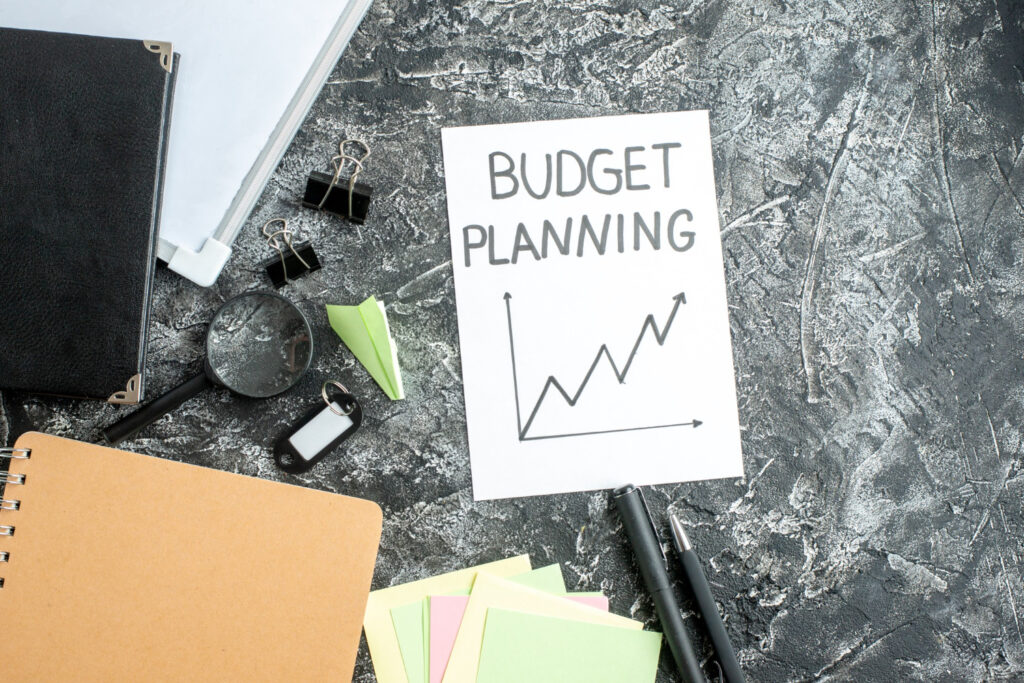Your 2026 Financial To-Do List: 13 Things To Check Off

Managing money isn’t exactly the most thrilling thing you’ll do this year. But you know what’s even less thrilling? Watching your bank account dwindle because you forgot to cancel that gym membership you haven’t used since February.
Here’s the thing: getting your finances together doesn’t require some complicated master plan. You just need a simple financial to-do list that keeps you on track. Think of it as your financial GPS, guiding you toward better money decisions without making your brain hurt.
I’ve been creating these lists at the start of every year for the past decade, and honestly? It’s one of the smartest habits I’ve picked up. Instead of scrambling around wondering where my money went, I’ve got a clear roadmap of what needs to happen.
So grab your coffee, and let’s walk through the 13 essential things your 2026 financial to-do list needs. Trust me, future you will send a thank-you note.
What’s A Financial To-Do List?
Before we jump into the nitty-gritty, let’s clarify what we’re actually talking about here.
A financial to-do list is basically your written game plan for money-related tasks you need to knock out within a specific timeframe. It could be monthly, quarterly, or yearly. Whatever works for your situation.
The beauty of having this list? It creates crystal-clear direction. You’re not just wandering around hoping your finances magically improve. You’re actively working toward specific goals that actually matter to your life.
Think of it like a grocery list, but instead of remembering to buy milk and eggs, you’re remembering to check your credit score and boost your emergency fund. Same concept, way bigger impact on your life.
How To Create A Financial To-Do List
Alright, so how do you actually build one of these lists without getting overwhelmed?
1. Start With Self-Reflection and Evaluation
First things first: you need to get brutally honest with yourself about your current money situation. I know, I know. Looking at your financial mistakes isn’t fun. But here’s the reality: you can’t fix what you don’t acknowledge.
Take some time to really think about the financial decisions you’ve made over the past year. What worked? What totally bombed? Did you rack up credit card debt buying stuff you didn’t need? Or maybe you finally started that emergency fund you’ve been putting off forever?
Every financial decision you make moving forward should be informed by what you’ve learned from past experiences. If you’ve been reckless with credit cards, that’s a clear signal you need to prioritize debt payoff on your list.
The point is simple: learn from your mistakes so you don’t keep repeating them. That’s literally half the battle right there.
2. Prioritize The Right Things
Here’s where people mess up. They try to do everything at once and end up doing nothing well.
You can’t tackle ten major financial goals simultaneously. Your brain will explode, and you’ll probably give up by February. Instead, figure out what’s most critical for your specific situation right now.
For example, would you rather save up for a brand-new car or pay off that credit card that’s charging you 24% interest? (Hint: pay off the debt first. That interest is eating you alive.)
Rank your tasks by urgency and impact. What will move the needle most in your financial life? Start there.
3. Track Your Progress
Creating the list is step one. Actually following through is where the magic happens.
For every task you complete, take a moment to assess how it’s impacted your overall financial picture. Did paying off that credit card free up $200 a month? Awesome! Now you can redirect that money toward your emergency fund.
Tracking progress keeps you motivated and helps you see the tangible results of your efforts. Plus, there’s something deeply satisfying about checking items off a list. It’s like a little dopamine hit every time.
13 Things Your 2026 Financial To-Do List Should Include
Now for the good stuff. Here are the 13 essential tasks that should make their way onto your financial to-do list this year.
1. Prioritize Budgeting

Let’s kick things off with the foundation of all personal finance: budgeting.
I get it. The word “budget” makes some people break out in hives. It sounds restrictive and boring. But here’s the truth: a budget isn’t about limiting your life. It’s about making sure your money goes where you actually want it to go.
Without a budget, you’re basically driving with your eyes closed. Sure, you might get somewhere, but it probably won’t be where you intended.
Every single month, you need to review your spending plan. Check where your money went and compare it to where you planned for it to go. Did you overspend on dining out again? Maybe it’s time to meal prep more often.
When you overspend in one area, it affects everything else. Your savings goals take a hit. You might even need to use credit cards to cover basic expenses, which just digs you into a deeper hole.
Building a monthly budget gives you control. You’ll spot problem areas before they become disasters, and you’ll make adjustments in real-time instead of discovering issues three months later when it’s too late.
There are tons of budgeting methods out there. The zero-based budget, the 50/30/20 rule, envelope budgeting. Pick whatever system actually works for your lifestyle and stick with it.
2. Check Your Credit Scores

When’s the last time you actually looked at your credit score? If you’re like most people, it’s been way too long.
Some folks go literal years without checking their credit. That’s a huge mistake, especially if you ever plan on borrowing money for anything (car, house, business, whatever).
Your credit score is basically your financial report card. It shows lenders how responsible you are with borrowed money. A good score can save you thousands of dollars in interest over your lifetime. A bad score? Well, that can cost you big time.
But credit scores affect more than just loan applications. Landlords check them before renting to you. Some employers even review credit reports during the hiring process, especially for positions handling money.
The good news? Checking your credit score is easier than ever. Most banks and credit card companies offer free credit score monitoring. Credit Karma and Credit Wise are solid free options too.
Make it a habit to check your score at least quarterly. This way, you’ll catch any issues early and can take action before they snowball into bigger problems.
If your score needs work, don’t panic. There are proven strategies to improve it: pay bills on time, keep credit card balances low, don’t close old accounts, and dispute any errors on your report.
3. Calculate Your Debt-To-Income Ratio
Here’s a number most people ignore but really shouldn’t: your debt-to-income ratio, or DTI for short.
Your DTI compares how much money you owe each month to how much you earn. It’s a quick snapshot of your financial health, and lenders absolutely love looking at this number.
Calculating it is pretty straightforward. Add up all your monthly debt payments (mortgage, car loan, student loans, credit cards, personal loans). Then divide that total by your gross monthly income (before taxes). Multiply by 100 to get a percentage.
For example, if you pay $2,000 in debt each month and earn $6,000 gross, your DTI is about 33%. That’s actually pretty decent.
Generally speaking, lenders like to see a DTI of 36% or lower. That signals you’re managing debt responsibly and have room in your budget for additional payments if needed.
Anything above 43%? That’s a red flag. It means a huge chunk of your income is going toward debt, leaving little room for savings, emergencies, or, you know, actually enjoying life.
Even if you’re not planning to apply for a loan anytime soon, knowing your DTI helps you understand whether you’re living within your means or slowly drowning in debt.
If your ratio is too high, it’s time to either increase your income or aggressively pay down debt. Preferably both.
4. Calculate Your Net Worth

Pop quiz: what’s your net worth right now? If you don’t know, you’re not alone. But you really should figure it out.
Your net worth is the ultimate measure of your financial progress. It’s the big-picture view that shows whether you’re actually building wealth or just treading water.
The calculation is simple: add up everything you own (assets), then subtract everything you owe (liabilities). What’s left is your net worth.
Assets include cash in your bank accounts, retirement accounts, investment portfolios, real estate, vehicles, and any other valuable stuff you own. Liabilities are your debts: mortgages, student loans, car loans, credit card balances, personal loans.
Let’s say you’ve got $50,000 in assets and $30,000 in debt. Your net worth is $20,000. Not bad!
I calculate my net worth every three months. It’s like taking regular financial pulse checks. Am I moving in the right direction? Are my strategies actually working?
Tracking net worth over time reveals trends. Maybe your investments are growing nicely, but your debt isn’t decreasing fast enough. That insight helps you adjust your strategy.
The goal is simple: increase assets and decrease liabilities. Do that consistently, and your net worth will climb steadily over time.
Don’t get discouraged if your net worth is negative right now. Plenty of people start there, especially with student loans. What matters is the direction you’re heading.
5. Create New Financial Goals
New year, new goals, right? But let’s make sure these goals are actually achievable this time.
Setting financial goals gives you something concrete to work toward. Without goals, you’re just aimlessly moving money around hoping something good happens.
Start by reviewing last year. Did you hit your targets? If not, why? Was the goal unrealistic? Did life throw you a curveball? Did you simply lose motivation halfway through?
Understanding what went wrong helps you set better goals this time around.
Financial goals generally fall into two categories: short-term and long-term.
Short-term goals are things you want to accomplish within the next year or two. Examples include building a $1,000 emergency fund, paying off a credit card, saving for a vacation, or buying new furniture without using credit.
Long-term goals take several years or even decades. Think buying a house, funding your kids’ college education, starting a business, or building a retirement nest egg.
Here’s the key: make your goals specific and measurable. “Save more money” is vague and useless. “Save $5,000 for an emergency fund by December 31st” is clear and actionable.
Also, be realistic. If you’re currently saving $50 a month, don’t set a goal to save $20,000 this year unless you’re about to get a massive raise. Set yourself up for success, not frustration.
Write your goals down and put them somewhere visible. Seriously, this works. When you see your goals regularly, you’re more likely to actually work toward them.
6. Take Advantage Of Your Company’s 401(k) Match
If your employer offers a 401(k) match and you’re not taking full advantage of it, you’re literally leaving free money on the table. Stop it.
A 401(k) match is when your employer contributes money to your retirement account based on how much you contribute. It’s part of your compensation package, and it’s one of the best benefits you can get.
For example, your company might match 100% of your contributions up to 5% of your salary. So if you earn $50,000 and contribute $2,500 (5%), your employer adds another $2,500. That’s free money, people!
Here’s how 401(k)s work: you contribute a portion of your paycheck before taxes are taken out. That money grows tax-free inside the account. You only pay taxes when you withdraw the money in retirement.
Your 401(k) isn’t just a savings account. It’s an investment account that holds various investments like stocks, bonds, and mutual funds. Over time, these investments can grow significantly.
Every employer’s match program is different. Some match dollar-for-dollar up to a certain percentage. Others might match 50 cents for every dollar you contribute. Some have vesting schedules, meaning you need to work there a certain number of years before the match is fully yours.
Contact your HR department to understand exactly how your company’s match works. Then contribute at least enough to get the full match. If you’re not doing this, you’re essentially taking a pay cut.
And look, I get it. Money might be tight, and contributing to retirement feels impossible. But even starting with just enough to get the match makes a huge difference over time thanks to compound growth.
7. Get Life Insurance

Nobody likes thinking about their own death. It’s depressing and uncomfortable. But you know what’s worse? Leaving your family financially screwed if something happens to you.
If you don’t currently have life insurance, getting a policy should be near the top of your financial to-do list.
Life insurance provides financial protection for your loved ones if you die. The payout (called a death benefit) can cover funeral costs, outstanding debts, mortgage payments, and daily living expenses.
The best part? Life insurance is way more affordable than most people think. You can get a $1,000,000 term life policy for 20 years for less than $30 a month if you’re relatively young and healthy.
There are two main types: term life and whole life. Term life covers you for a specific period (like 20 or 30 years) and is much cheaper. Whole life covers you for your entire life and includes a cash value component, but it’s significantly more expensive.
For most people, term life insurance is the smarter choice. It’s affordable and provides solid coverage during the years when your family depends on your income most.
Even if you’re single without kids, you might still need life insurance. Do you have aging parents who depend on you? Siblings? Significant debt that someone would be responsible for? Then yes, you need coverage.
Getting a policy is pretty straightforward. You can work with an insurance agent or use online services like Policygenius or Haven Life to compare quotes and apply.
8. Check Your Credit Report
Your credit score is important, but your actual credit report? That’s where all the detailed information lives.
Checking your credit report multiple times a year should be standard practice. It helps you catch errors, spot identity theft, and understand exactly what’s impacting your credit score.
There are three major credit bureaus: Equifax, TransUnion, and Experian. Each one maintains its own report on you, and they don’t always match perfectly.
Here’s the cool part: you’re entitled to one free credit report from each bureau every year through AnnualCreditReport.com. That’s three free reports annually.
Smart strategy? Request one report every four months, rotating through the three bureaus. This way, you’re monitoring your credit consistently throughout the year without paying a dime.
When you review your report, look for errors. Wrong addresses, accounts you didn’t open, incorrect balances, late payments you know you made on time. Mistakes happen more often than you’d think, and they can tank your score.
If you spot an error, dispute it immediately. The credit bureau is required to investigate and correct legitimate mistakes.
Also watch for signs of identity theft. Accounts you didn’t open or inquiries you didn’t authorize are major red flags that someone might be using your information.
Regularly checking your credit report isn’t paranoid. It’s smart financial hygiene that protects you from problems down the road.
9. Create An Emergency Fund
If 2020 taught us anything, it’s that life can go sideways fast. And when it does, an emergency fund is the difference between handling it and drowning in debt.
An emergency fund is money you set aside specifically for unexpected expenses or financial emergencies. It’s your safety net, your buffer, your financial airbag.
Think about it: your phone falls in the toilet, your car needs a new transmission, you suddenly need emergency dental work, or you lose your job. How do you pay for these things if you’re living paycheck to paycheck?
Most people without emergency savings resort to credit cards. Then they’re stuck paying interest on top of the original expense, making the situation even worse.
Financial experts typically recommend saving three to six months’ worth of expenses. If your monthly expenses are $3,000, you’d want $9,000 to $18,000 in your emergency fund.
I know that sounds like a lot. If you’re starting from zero, it can feel impossible. But here’s the secret: start small.
Your first goal should be $500. Then $1,000. Then one month of expenses. Build it gradually, and celebrate each milestone.
Keep your emergency fund in a separate savings account, preferably a high-yield savings account that earns decent interest. Ally Bank, Marcus by Goldman Sachs, and Discover all offer competitive rates.
The key is keeping this money accessible but separate from your regular spending money. You don’t want it so easy to access that you dip into it for non-emergencies, but you need to be able to get it quickly when real emergencies happen.
Every financial plan should start with an emergency fund. It’s the foundation everything else is built on.
10. Find The Right Investment Plan
Saving money is great. Investing money? That’s how you actually build wealth.
Too many people think retirement planning means just socking away cash in a savings account. But here’s the harsh reality: inflation will eat away at that money’s value over time.
Investing allows your money to grow exponentially through compound returns. And the earlier you start, the more powerful this effect becomes.
Let me throw some numbers at you to illustrate the point.
Say you invest $1,000 in a retirement account with an 8% annual return. After 40 years, that single $1,000 investment grows to $21,724. Not bad for doing literally nothing except waiting.
Now let’s say you invest that initial $1,000 and then add another $1,000 every year for 40 years. With the same 8% return, you’d end up with $301,505. That’s the power of consistent investing.
Want to really blow your mind? Start with $10,000 and add $10,000 annually for 40 years at 8% returns. You’d have $3,015,055. Over three million dollars.
Obviously, not everyone can invest $10,000 a year. But the principle applies regardless of the amount. Consistent investing over long periods creates serious wealth.
Where should you invest? That depends on your goals, timeline, and risk tolerance.
Retirement accounts like 401(k)s and IRAs are great starting points because they offer tax advantages. You can invest in index funds, which track the overall market and provide instant diversification.
If you’re new to investing, consider using a robo-advisor like Betterment or Wealthfront. They create and manage a diversified portfolio for you based on your goals and risk tolerance.
The important thing is to start. Even small amounts invested consistently will grow significantly over time. Waiting for the “perfect” time to start means you’re missing out on years of potential growth.
11. Cut Out Unnecessary Expenses
Let’s talk about the stuff you’re wasting money on without even realizing it.
Cutting unnecessary expenses frees up cash that can be redirected toward things that actually matter, like paying off debt or building savings.
If you’ve got a budget (and you should, see number one), this process is pretty straightforward. Review your spending categories and identify areas where you’re overspending or spending on things that don’t add real value to your life.
Dining out is usually a big one. Sure, restaurant meals are convenient and tasty, but they add up fast. If you’re dropping $400 a month on takeout, cutting that in half saves you $200 monthly. That’s $2,400 a year!
Subscriptions are another sneaky money drain. Streaming services, gym memberships, subscription boxes, software subscriptions. Most people have at least a few they barely use or forgot they even had.
Here’s what happens: you sign up for a free trial, forget to cancel, and boom, you’re paying $9.99 a month for something you used once. Multiply that by several subscriptions, and you’re hemorrhaging money.
Go through your bank and credit card statements. Identify every recurring charge. Ask yourself honestly: am I actually using this? Does it add enough value to justify the cost?
Cancel anything that doesn’t pass that test. You can always resubscribe later if you genuinely miss it.
Other areas to examine: your phone plan (are you paying for unlimited data you don’t use?), cable TV (streaming is way cheaper), insurance policies (shop around for better rates), and impulse purchases.
The goal isn’t to live like a monk and never enjoy anything. It’s about being intentional with your spending and eliminating waste that doesn’t improve your life.
Every dollar you free up is a dollar that can go toward goals that actually matter to you.
12. Get An Extra Income Stream
Sometimes cutting expenses isn’t enough. You need to increase the money coming in.
Having multiple income streams provides financial security and flexibility. If one source dries up, you’ve got others to fall back on. Plus, extra income accelerates your progress toward financial goals.
The side hustle economy has exploded in recent years, and for good reason. It’s easier than ever to make extra money outside your regular job.
Freelancing is one of the most accessible options. If you’ve got skills in writing, graphic design, web development, social media management, or virtual assistance, people will pay you for those services.
Platforms like Upwork, Fiverr, and Freelancer connect freelancers with clients. You can start small, working a few hours a week, and potentially scale up to a full-time income.
Even just a few extra hours of freelancing each week can bring in several hundred dollars monthly. That’s enough to make a real dent in debt or seriously boost your savings.
If you’re more entrepreneurial, consider starting an online business. Models like affiliate marketing, print-on-demand, dropshipping, or creating digital products can be incredibly profitable.
These businesses typically have low startup costs and can be run from home in your spare time. They take effort to build, but the income potential is significant. Some people earn thousands per month once they get things rolling.
Other options include renting out a spare room on Airbnb, driving for rideshare services, delivering food, tutoring, pet sitting, or selling handmade items on Etsy.
The key is finding something that fits your skills, interests, and schedule. You’re way more likely to stick with a side hustle if you don’t hate every minute of it.
Extra income gives you options. Options to pay off debt faster, save more aggressively, invest more, or simply breathe a little easier financially.
13. Fill Out An Emergency Binder
Here’s something most people never think about until it’s too late: organizing all your important financial information in one place.
An emergency binder (sometimes called a legacy binder) is a physical or digital collection of all your critical financial documents and information.
Think about it: if something happened to you tomorrow, would your family know where to find your bank account information? Insurance policies? Investment accounts? Passwords? Probably not.
This causes massive stress and confusion during already difficult times. Your loved ones are grieving and simultaneously trying to piece together your financial life from scattered clues.
An emergency binder solves this problem by putting everything in one organized, accessible location.
What should go in your emergency binder? Here’s a starting list:
- Bank account information (account numbers, institutions, contact info)
- Investment and retirement account details
- Insurance policies (life, health, home, auto)
- Mortgage or rental agreements
- Utility account information
- Credit card accounts
- Loan information (student, personal, auto)
- Important passwords (stored securely)
- Social Security numbers for household members
- Birth certificates and marriage certificates
- Wills and estate planning documents
- Contact information for financial advisors, lawyers, and accountants
You don’t need anything fancy. A simple three-ring binder with dividers works perfectly. Or create a secure digital version using password-protected files stored in the cloud.
Just make sure someone you trust knows where to find it and how to access it if needed.
Update your emergency binder at least once a year or whenever you have major financial changes (new accounts, closed accounts, moved, etc.).
This might seem morbid or unnecessary, but trust me, it’s one of the most thoughtful things you can do for your family. It’s a gift they’ll hopefully never need, but if they do, they’ll be incredibly grateful you took the time.
Final Thoughts
Look, I get it. This list might seem overwhelming. Thirteen things to tackle feels like a lot when you’re already juggling work, family, and trying to remember to drink enough water.
But here’s the secret: you don’t have to do everything at once.
Pick two or three items that are most critical for your situation right now. Focus on those first. Once you’ve made progress, move on to the next items.
The point of a financial to-do list isn’t to stress you out. It’s to give you a clear roadmap so you’re not wandering aimlessly hoping your finances magically improve.
Small, consistent actions compound over time. Checking your credit score takes five minutes. Reviewing your budget takes thirty. Calculating your net worth might take an hour the first time, but then it’s quick every time after.
These aren’t massive, life-consuming tasks. They’re simple actions that, when done regularly, create significant positive change in your financial life.
And honestly? There’s something deeply satisfying about checking items off your list. Each completed task is proof you’re taking control and moving in the right direction.
Your financial situation won’t transform overnight. But a year from now, you’ll look back and be amazed at how far you’ve come just by consistently working through your to-do list.
So what are you waiting for? Grab a notebook, open a document, or download a task app. Start your 2025 financial to-do list right now. Future you is already thanking you. 🙂








